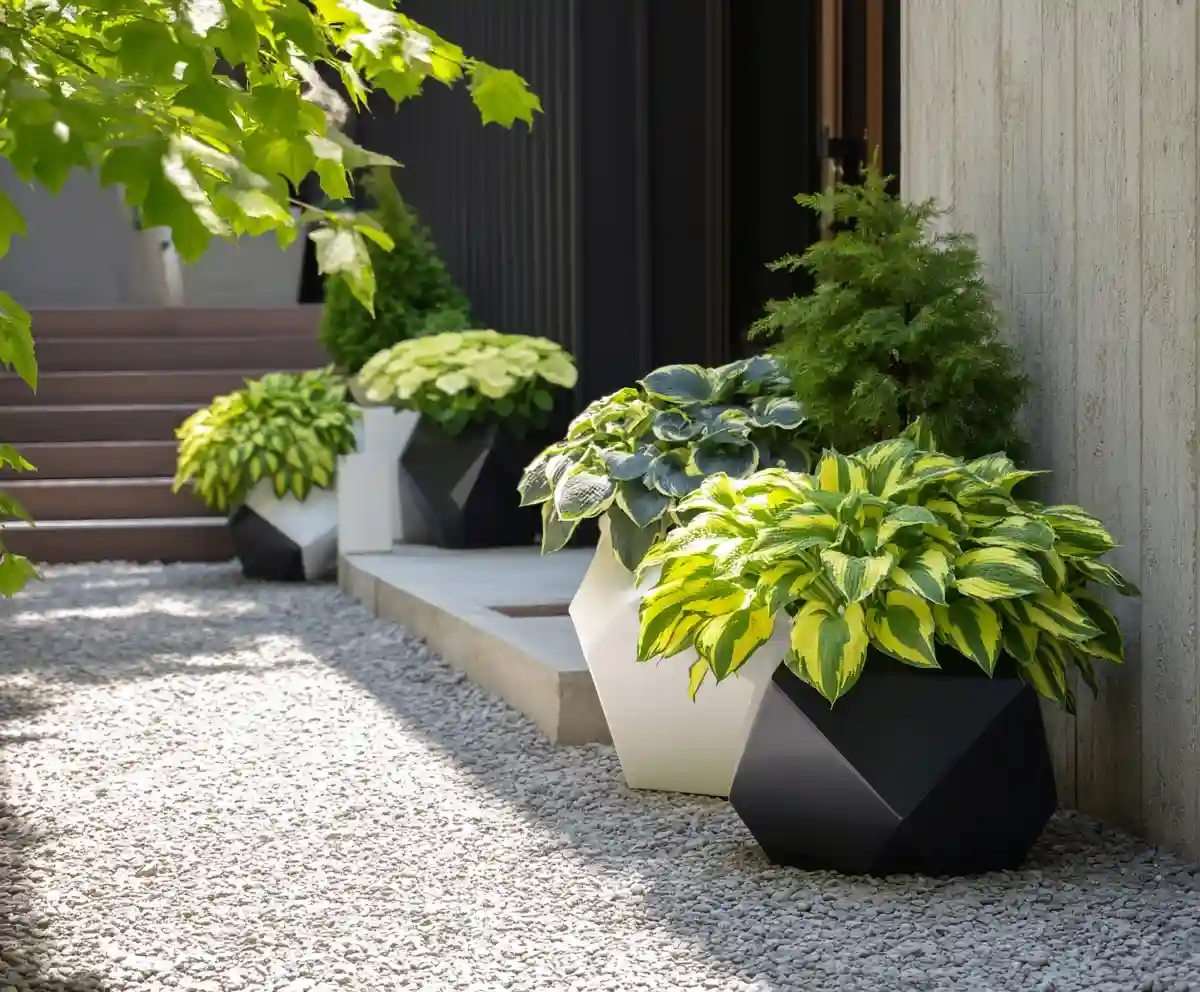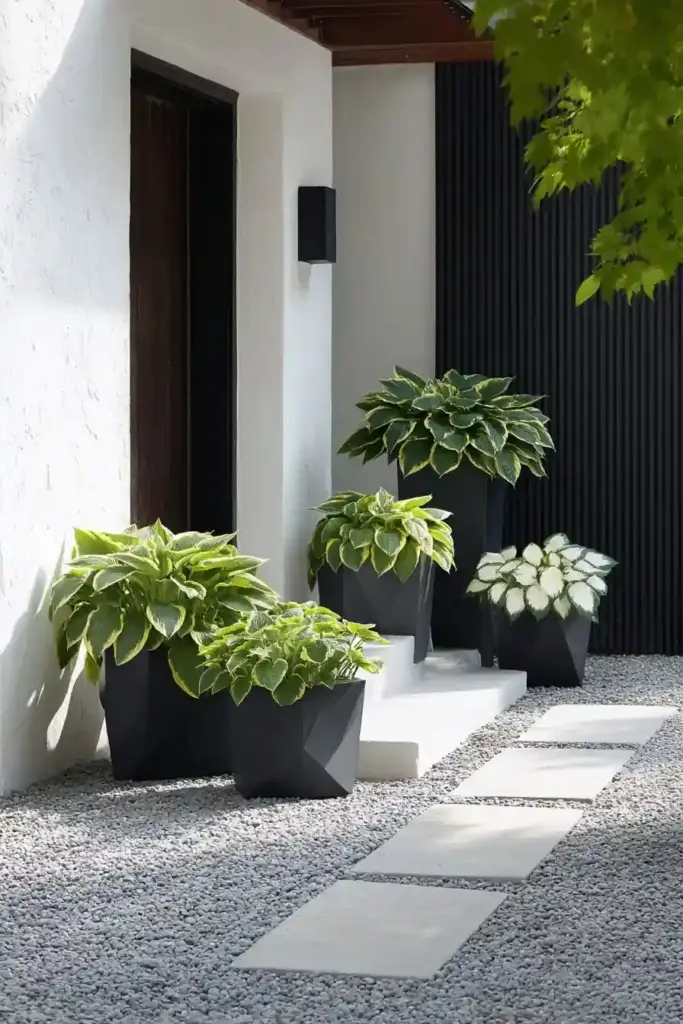When it comes to creating a serene and stylish container garden, outdoor potted plants like hostas are hard to beat—especially if you’re after a truly low-maintenance solution. With their lush, textured foliage and exceptional shade tolerance, hostas have become a standout choice for gardeners designing shaded patio displays or refreshing front porch flower pots. Their ability to thrive in partial light while requiring minimal upkeep makes them one of the best low-maintenance outdoor potted plants available.
Whether you’re limited on garden space or just want to simplify your care routine, hostas offer a practical yet beautiful option. If you’re planning a seasonal refresh or want to pair hostas with sun-loving porch plants, they provide the perfect contrast. In this guide, you’ll get expert advice on choosing the best hosta varieties, caring for them through the seasons, and keeping pests like slugs and deer at bay—all while enhancing your collection of outdoor potted plants with long-lasting, low-fuss appeal.
Table of Contents
🌿 Hosta Benefits and Characteristics
If you’re searching for low-maintenance outdoor potted plants, hostas stand out not only for their easygoing nature but also for their diverse appearance and resilience. These shade-loving perennials come in a range of sizes, colors, and leaf textures that make them a striking addition to any container garden.
🌱 Why Hostas Are Ideal for Pots:
- Shade Tolerance: Hostas thrive in low-light areas, making them perfect for shaded patios, porches, or under trees.
- Versatile Sizes: From miniature varieties that fit into small containers to larger cultivars with towering flower scapes, there’s a hosta for every pot size.
- Diverse Foliage: Their leaves come in shades of deep green, chartreuse, blue-gray, and variegated patterns—with textures ranging from seersuckered and crinkled to heart-shaped and glossy.
- Long Lifespan: With proper care, hostas in containers can live for many years and continue to grow fuller over time.
- Durable and Forgiving: Even when forgotten or neglected temporarily, hostas often bounce back, making them excellent outdoor potted plants for beginner and busy gardeners alike.
Whether you’re going for a formal look or a relaxed cottage-style container garden, hostas blend effortlessly with other shade-tolerant plants, including ferns, impatiens, and coleus.
🪴 Essential Hosta Growing Tips for Containers
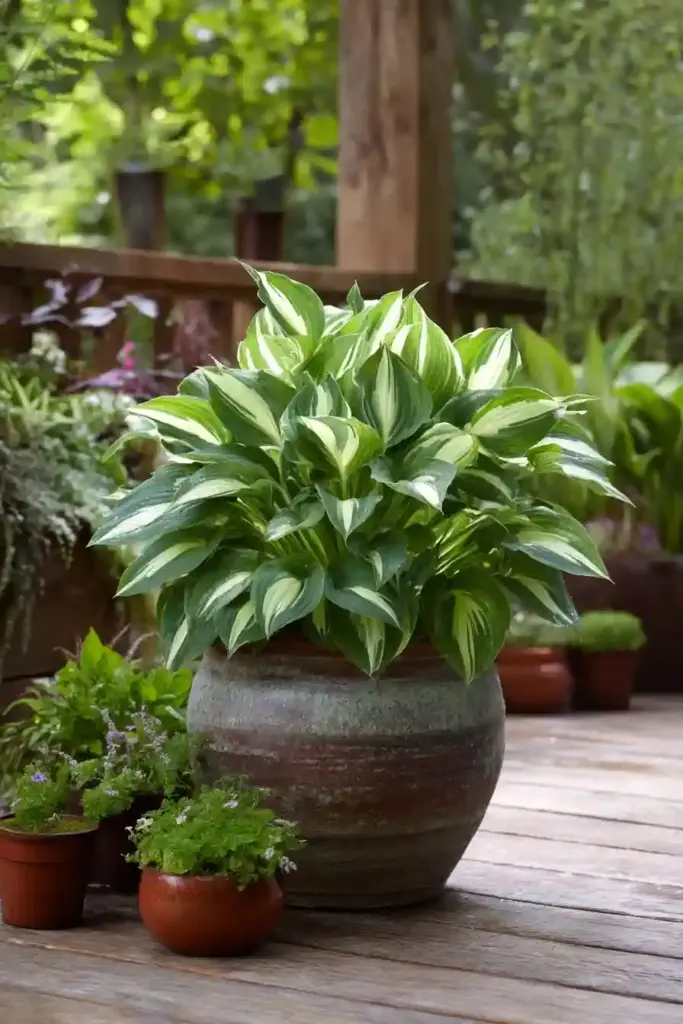
Growing hostas in containers is surprisingly simple once you understand their basic needs. As one of the best low-maintenance outdoor potted plants, hostas will reward you with lush, eye-catching foliage year after year—if you set them up for success.
🌼 Potting Basics
- Choose the Right Container
Use a pot with drainage holes to prevent soggy roots. For larger hostas, choose a container at least 12–18 inches deep to accommodate their expanding root systems. - Soil Requirements
Hostas prefer rich, loamy, and slightly acidic soil with a pH around 6. Avoid clay-heavy or compacted mixes. Add compost to improve drainage and fertility. - Location & Light
While hostas are shade lovers, light requirements vary by variety.- Blue-leafed types prefer full shade
- Variegated and gold-leaf varieties often tolerate more morning sun
Always avoid harsh afternoon sun, which can scorch leaves.
💧 Watering and Moisture
Consistent moisture is the key to happy hostas in pots:
- Water regularly, especially during hot summer spells or in windy locations
- Let the top inch of soil dry slightly between waterings, but never allow the pot to fully dry out
- Morning or evening watering helps reduce evaporation and leaf scorching
🌿 Fertilizing Tips
- In early spring, apply a diluted solution of Epsom salts (1 oz per gallon of water) to encourage robust growth and vibrant leaves
- During the growing season, feed monthly with a balanced liquid fertilizer or a slow-release granular formula formulated for foliage plants
🍂 Mulching for Containers
Mulch isn’t just for in-ground gardens! It helps potted hostas retain moisture and suppress weeds:
- Add a layer of shredded bark, wood chips, or decorative stones to the top of the soil
- Don’t let mulch touch the crown of the plant to avoid rot
⏳ Patience Pays Off
Even in containers, hostas take time to reach their full size—typically 2 to 3 years. But once they’re established, they’ll deliver year after year with minimal effort.
🛡 Pest Control Tips for Outdoor Potted Hostas
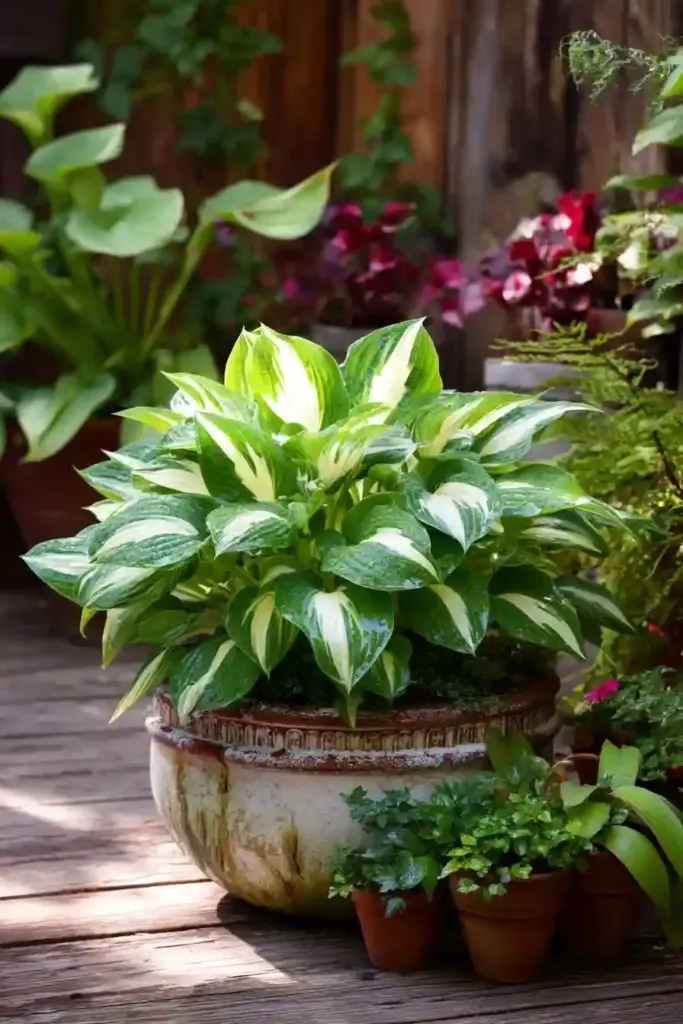
Even the most resilient low-maintenance outdoor potted plants can fall prey to persistent pests—and hostas are no exception. While these beauties are generally tough, they’re a favorite snack for both deer and slugs. Fortunately, you can keep these pests at bay with a few natural and effective solutions.
🦌 Keeping Deer Away from Potted Hostas
If your containers are on a deck or porch, deer might not be a concern. But if your potted hostas live at ground level, these nighttime grazers may help themselves.
- Homemade Hot Pepper Spray:
Mix crushed hot peppers or cayenne powder with water and a drop of dish soap. Spray generously on leaves and around containers. Reapply after rain. - Scent Deterrents:
Deer dislike strong scents. Use garlic, lavender, or commercial deterrents like predator urine or motion-activated lights around your patio or garden.
🐌 Slug-Proofing Your Pots
Slugs love damp conditions and tender hosta leaves, especially in shady container setups. These tips will help keep your potted plants safe:
- Beer Traps:
Place shallow dishes of beer near your containers. Slugs are attracted to the scent, crawl in, and drown. - Crushed Eggshells:
Surround your hosta pots with a ring of crushed eggshells or coarse sand. The sharp texture deters slugs from crossing. - Copper Tape:
Wrapping copper tape around the rims of your pots can repel slugs through mild electric conductivity.
✅ Additional Tips
- Keep the area around your pots tidy to reduce hiding places for slugs
- Avoid watering in the evening, which invites slug activity
- Occasionally inspect the underside of leaves and remove pests by hand
By incorporating these easy, chemical-free methods, your hostas will remain among the healthiest outdoor potted plants in your garden—without becoming dinner for the local wildlife.
🌼 Recommended Hosta Varieties for Containers
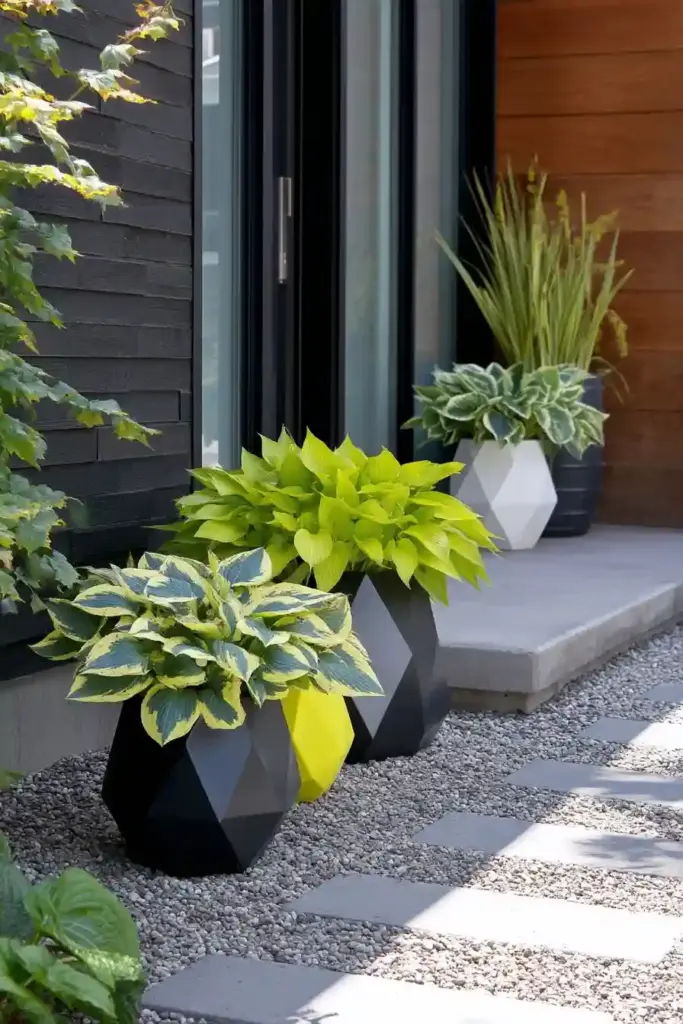
Not all hostas are created equal when it comes to container gardening. If you’re seeking outdoor potted plants that combine elegance with easy care, the following hosta cultivars deliver exceptional performance, visual appeal, and variety in texture and color.
🪴 Top Hosta Picks for Pots:
1. ‘Halcyon’
- Color: Dusty blue foliage that deepens with age
- Size: Medium; forms a 30-inch-wide clump
- Why It Works in Pots: Tolerates more sun than most blue-leafed hostas and holds color well. Great as a focal point in a container arrangement.
2. ‘Tokudama Flavocircinalis’
- Color: Blue leaves with irregular yellow margins
- Texture: Slightly cupped, corrugated
- Growth Habit: Slow, but stunning as it matures
- Bonus: Ideal for semi-shaded patios with dappled light
3. ‘Regal Splendor’
- Color: Blue-gray with creamy-white margins
- Form: Vase-shaped with tall flower scapes
- Perfect For: Adding height and structure to mixed potted displays
4. ‘Little Sunspot’
- Color: Yellow centers with green edges
- Size: Small, compact; perfect for tight spaces
- Texture: Seersuckered foliage adds depth
- Why Gardeners Love It: This cheerful cultivar brightens up shady corners
5. H. montana ‘Aureomarginata’
- Color: Deep green leaves with golden-yellow edges
- Size: Large, dramatic, cascading form
- Container Tip: Use a larger pot with sturdy drainage to support its size and spread
🌿 Where to Find Them
While local garden centers usually carry a limited selection, online nurseries often offer a broader range of unique hostas. You can also ask fellow gardeners if they’re dividing theirs in the fall—an affordable (and neighborly) way to expand your potted hosta collection.
💡 Bonus Tips for Growing Hostas as Low-Maintenance Outdoor Potted Plants
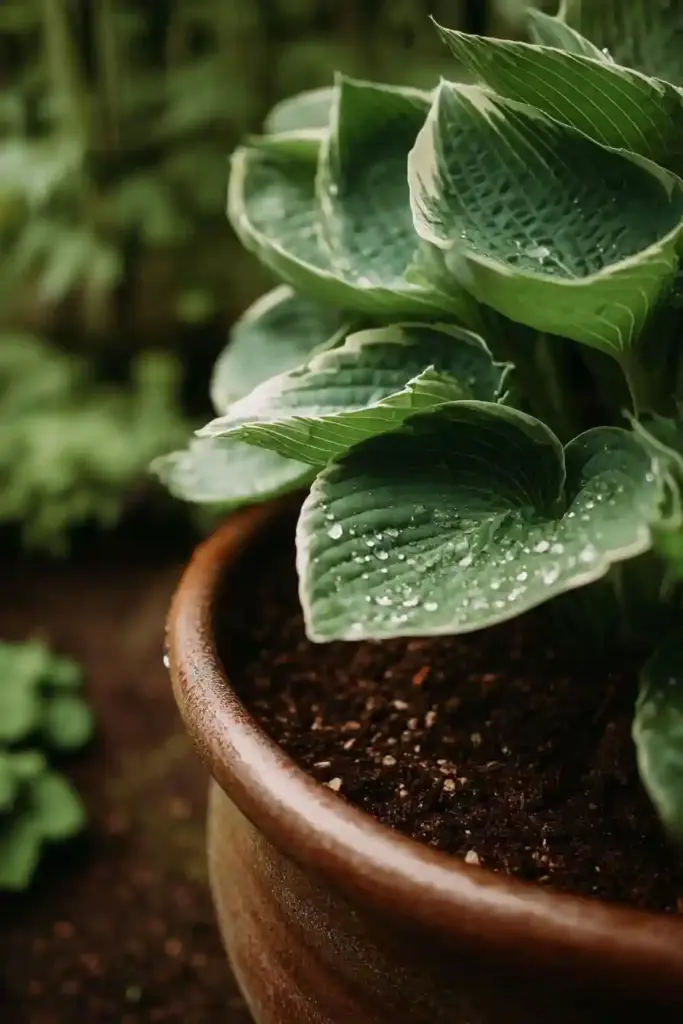
While hostas already have a reputation for being fuss-free, these expert tricks can make growing them in pots even easier—and more rewarding.
🪴 Divide Smart, Not Hard
- Timing Matters:
The best time to divide hostas is early spring, just as shoots begin to emerge, or in early fall, before dormancy sets in. Avoid dividing in summer, which stresses the plant. - Get the Root Ball:
When dividing, dig deep to retain as much of the root ball as possible. This helps the plant reestablish faster in its new container. - Revive Neglected Plants:
Hostas are incredibly forgiving. Even if you accidentally leave a divided clump in a bucket for a week (it happens!), there’s a good chance it’ll survive.
🧊 Overwintering Potted Hostas
- Hostas are hardy, but in pots, their roots are more exposed to freezing temps. To protect them:
- Move pots to a sheltered area (garage, shed, or against a wall)
- Mulch with leaves or straw to insulate the soil
- Water lightly before the first hard freeze and allow them to go dormant naturally
🤝 Frugal Gardening Tip
Ask gardening friends if they’re dividing their hostas in fall. Many varieties grow large quickly and need regular splitting, making this a great (free!) way to expand your container garden.
🗓 Planting Calendar
- Avoid planting right before the last frost in spring. Give your hostas a few weeks to establish roots before colder weather returns.
🌟 Conclusion
Whether you’re working with a shaded balcony, a cozy patio, or a backyard that needs a touch of texture and greenery, hostas are one of the most dependable outdoor potted plants you can choose. Their bold foliage and relaxed growing habits make them a top pick among low-maintenance garden plants—ideal for beginners and seasoned green thumbs alike.
With just a bit of care, well-draining soil, and a shady spot, your hostas will flourish season after season. These low-maintenance outdoor potted plants ask for so little, yet deliver such rewarding beauty. Whether you’re pairing them with front porch container ideas or starting a full shade-loving collection, hostas prove that simplicity and elegance can absolutely go hand in hand. Start with one, and don’t be surprised if your hosta collection quickly grows!
❓ Frequently Asked Questions (FAQ)
1. Are hostas good low-maintenance outdoor potted plants for beginners?
Yes! Hostas are one of the easiest shade-tolerant plants to grow in containers. They require minimal upkeep once established and are highly forgiving, making them ideal for novice gardeners looking for low-maintenance outdoor potted plants.
2. Can I leave hostas in pots over winter?
You can—but some precautions help. Move pots to a sheltered location like a garage or porch, and insulate with mulch or straw. Hostas go dormant in winter and typically bounce back beautifully in spring.
3. How often should I water hostas in containers?
Hostas like consistently moist soil. Water when the top inch of soil feels dry, typically 2–3 times per week in warm weather. Morning or evening watering is best to prevent leaf burn and slug attraction.
4. What size pot do hostas need?
Start with at least a 12- to 18-inch deep pot for medium-sized varieties. Larger hostas need more root space, so opt for wider and deeper containers as they grow.
5. Do hostas need sun or shade?
Hostas are shade-loving plants, but some varieties tolerate morning sun. In general, blue and green types prefer deep shade, while variegated and gold-leaf hostas do well in filtered sunlight.
6. What can I plant with hostas in a container?
Great companion plants include:
- Ferns
- Heuchera (coral bells)
- Astilbe
- Impatiens
These combinations create lush, vibrant container gardens that are also low-maintenance outdoor potted plants.
🌿 Love gardening inspiration? Follow me on Pinterest for bold plant ideas, tips, and seasonal color!
More Posts
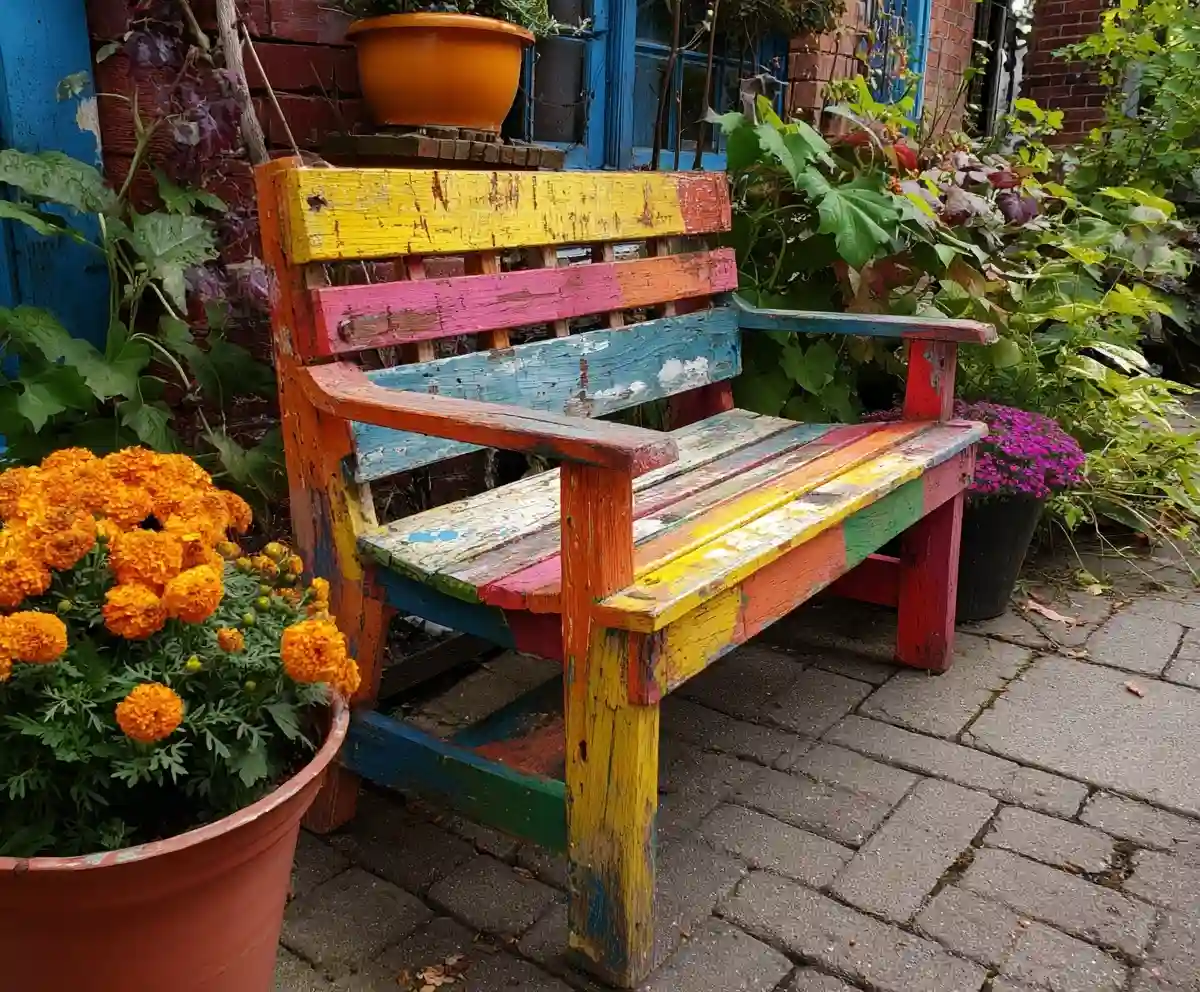
19+ Budget-Friendly Backyard Makeover Ideas
Backyard makeover ideas can turn even the most ordinary outdoor space into a warm, inviting retreat—without draining your wallet.
Read More →
21 Stunning & Simple DIY Clematis Trellis Designs
DIY clematis trellis designs are a beautiful way to blend creativity with function in your garden.
Read More →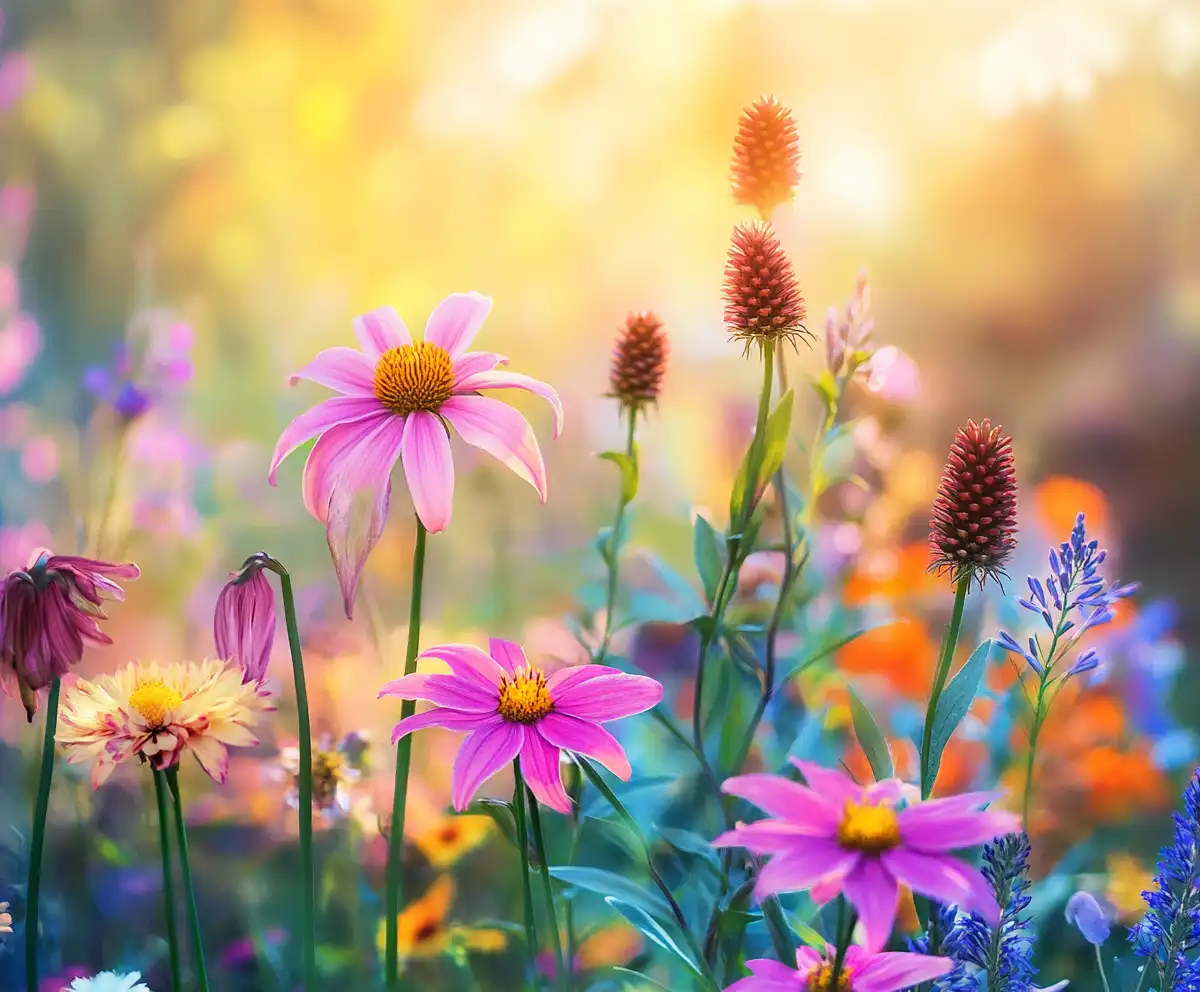
12 Full Sun Perennials That Bloom All Summer
Explore a selection of hardy perennials that flourish and bloom beautifully in full sun throughout the summer.
Read More →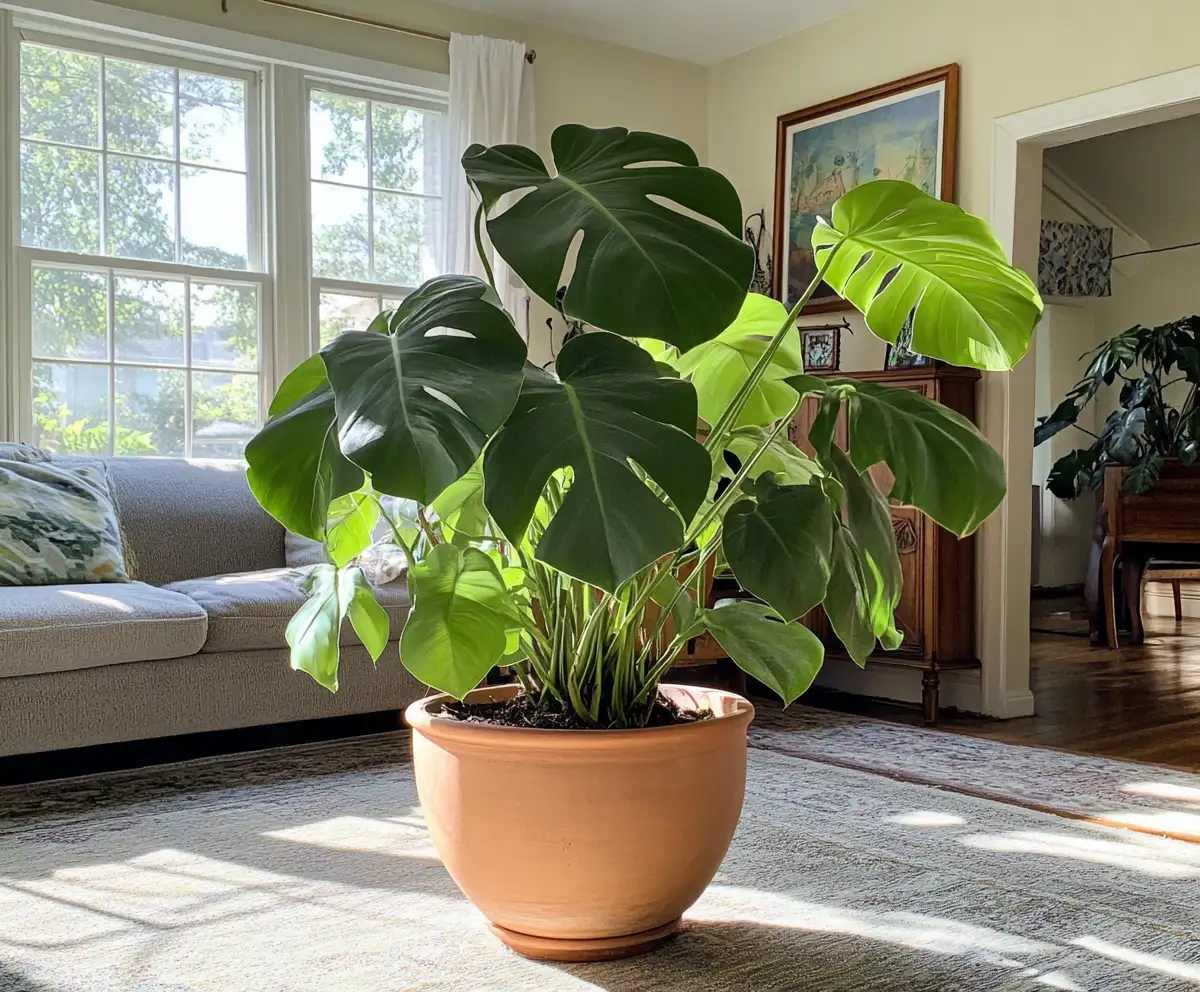
Houseplants for Living Room
Find the perfect houseplants to brighten and purify your living room while adding a touch of nature indoors.
Read More →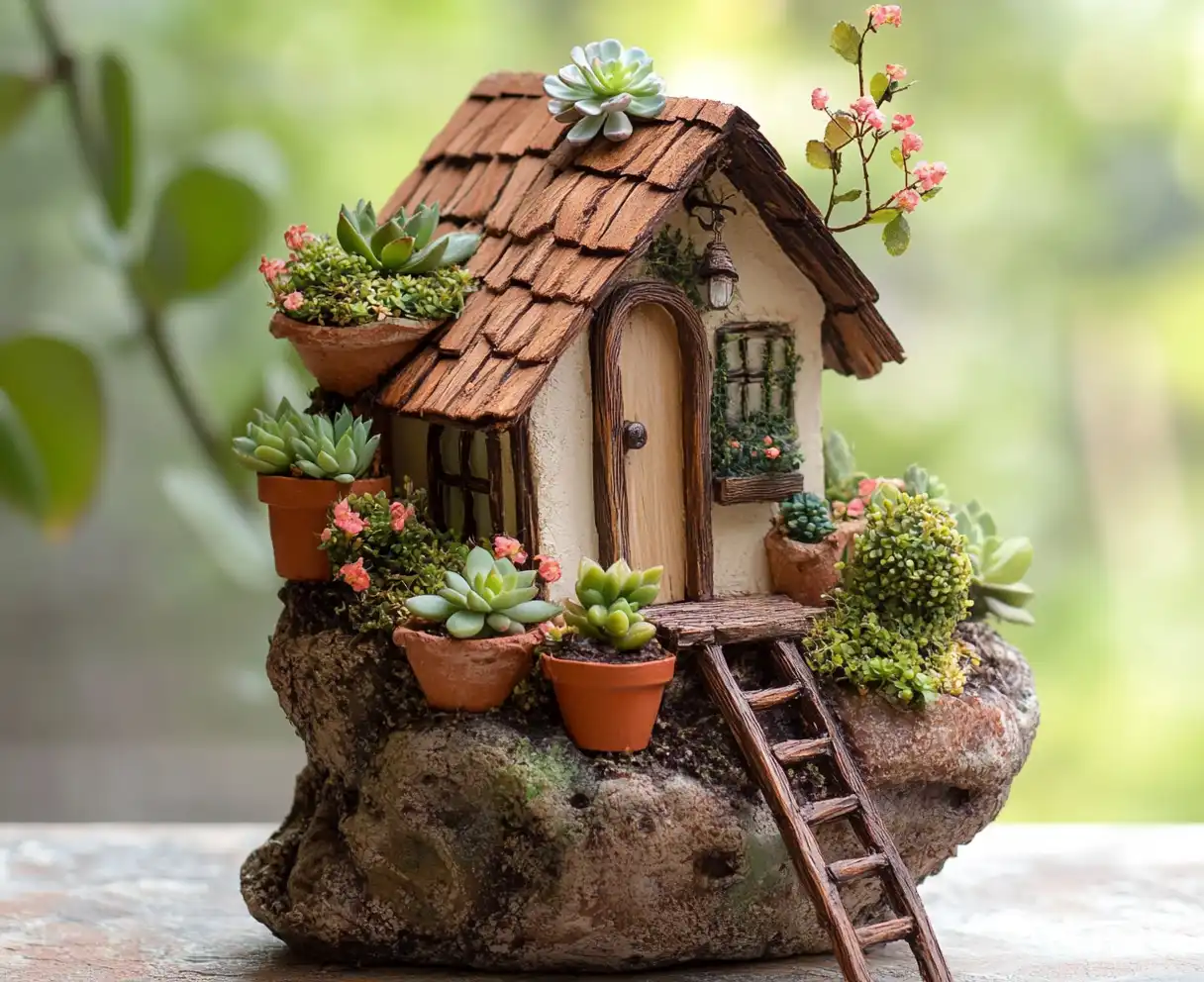
Backyard Play Area for Kids
Create a fun and safe backyard play area for kids with these inspiring design ideas and tips.
Read More →
Top Privacy Trees
Discover top tree varieties that provide natural privacy and enhance your outdoor space.
Read More →
